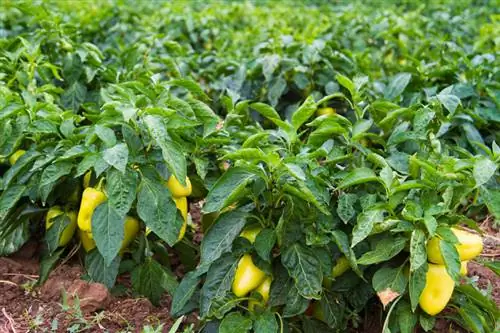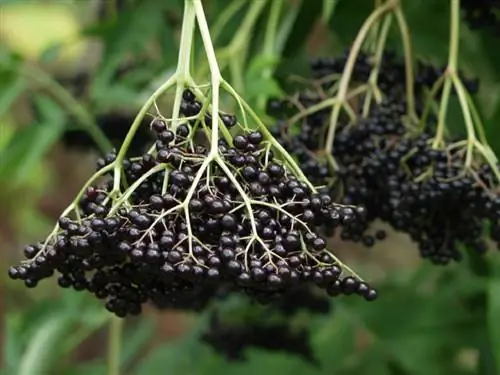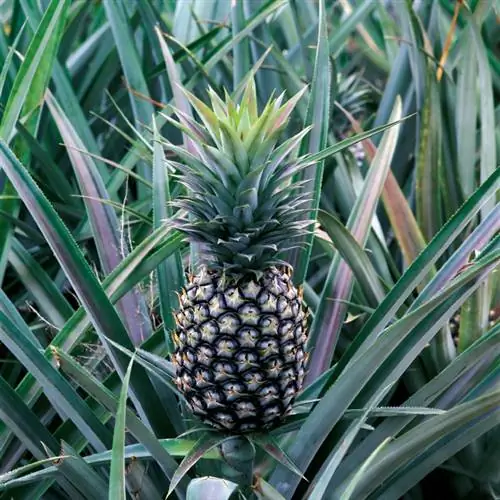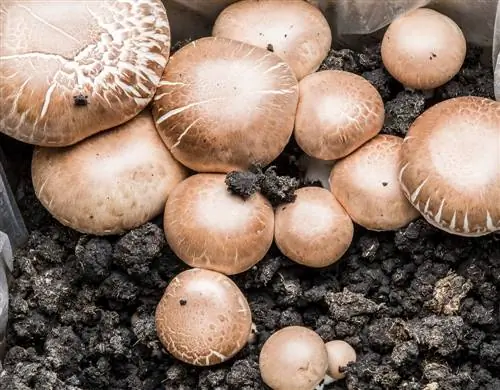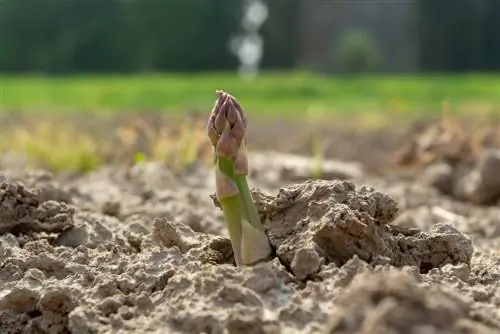- Author admin [email protected].
- Public 2023-12-16 16:46.
- Last modified 2025-01-23 11:21.
A word in advance that illuminates the motivation why we as allotment gardeners should strive to grow as diverse a range of fresh garden salads as possible, especially in winter.

How and when should you grow winter salads?
Winter salads can be planted outdoors until the end of October, initially covered with foil to keep out wind and rain. Varieties such as asparagus lettuce, romaine lettuce, lettuce and multileaf lettuce are well suited for winter cultivation.
- 28. February 2008: Residues in lettuce: No lettuce without nitrates;
- 28. May 2013: Packaged salads: Every second salad has too many germs;
- 28. March 2017: Chicory, lamb's lettuce & rocket in the test: How many pollutants are in it?
Those weren't headlines from the newspaper with the big "B" at the beginning, but the headlines of articles in the magazine "test" from the last few years. In the article from March 2017 you could read: “Spring is here, but lamb's lettuce and rocket are currently often still growing under glass or foil. We found a lot of nitrate in their leaves. In the test: 28 not-ready salads, including six organic products - ten chicory, nine lamb's lettuce and nine rocket. When it comes to pollution, two salads are very good, nine are only sufficient. We did not find any residues of pesticides or chlorate that were harmful to he alth. Pleasingly low in pollutants: chicory.“(Quote online portal Stiftung Warentest)
Vegetables thrive even in winter
It even grows almost by itself and without any complicated equipment, either in the garden or even in the pot, so that we don't have to go without broccoli, coriander, kale or the particularly popular Asian salads, even when it's frosty. But which species actually belong to the winter vegetable diversity in our geographical latitudes? We took a look around at our Austrian neighbors. Wolfgang Palme from the Higher Federal Teaching and Research Institute in Vienna gave some suggestions on variety diversity in his latest book “Harvesting fresh vegetables in winter”:
| Variety | Origin | Description |
|---|---|---|
| ‘Neusiedler Yellow Winter’ | Austrosaat | Eastern Austrian traditional variety with bright, delicate leaves |
| ‘Winter King’ | Austrosaat | Traditional variety with light leaves and a slight reddish pattern, relatively large heads |
| ‘Winter Butterhead’ | Samen Maier, Nebelung Kiepenkerl | Traditional variety with yellowish leaves, firm heads |
| ‘Brown Winter’ (‘Brune d’hiver’) | Sativa Rheinau, seeds Baumaux | strong growth even in winter; good results in our experiments; typical brown-red coloring |
| ‘Winterhäuptel’ | Noah's Ark | loose red-green heads |
| ‘Big blonde d’hiver’ | Essem’Bio | old variety, strong growth, yellow-green coloring; blistered, wavy leaves |
| ‘Merveille des quatre saisons’ | Bingenheimer Seeds | intense red-brown coloring, loose head |
| ‘Zimska Salata’ | Noah's Ark | Croatian winter lettuce, loose heads |
| ‘Vienna Forces’ | Noah's Ark | Traditional Viennese variety, blistered, wavy leaves, robust |
| ‘Unikum’ | Austrosaat | Ice lettuce, traditional variety, reddish edge |
Source: “Harvesting fresh vegetables in winter” by Wolfgang Palme, published by Löwenzahn Verlag Innsbruck
The pickled salads are particularly popular with gourmets
We have already reported on this popular leafy vegetable with its different flavors and cultivation forms in another article. But what about the cultivation of these lettuces, which are externally characterized by the fact that they have no head, but grow green, red or yellow and in the form of leaves on our beds? Similar to the popular head and romaine lettuces, in this country they can be planted outdoors without any concerns until the end of October so that strong roots can develop before the more severe frost. As with other winter lettuces, it is beneficial to cover them with foil to promote growth, although this does not primarily serve as frost protection, but is intended to keep wind and rain away from the sensitive plants.
Other varieties that are ideal for winter cultivation and grow into excellent sources of vitamins well into the new year include asparagus lettuce, romaine lettuce, lettuce (down to -10 °C) and the extremely fast-growing multileaf lettuces.


